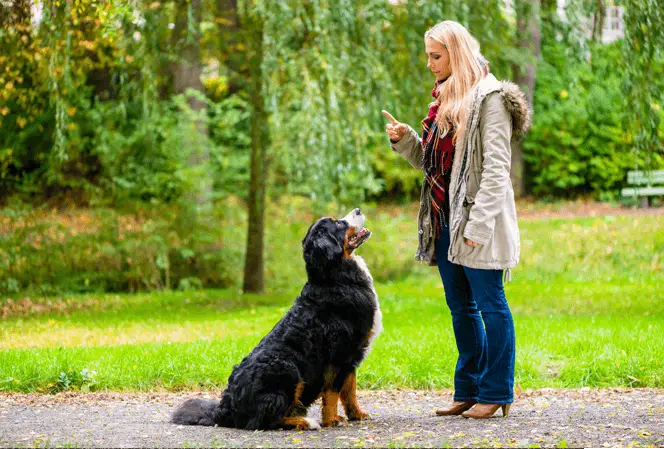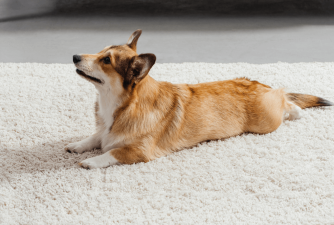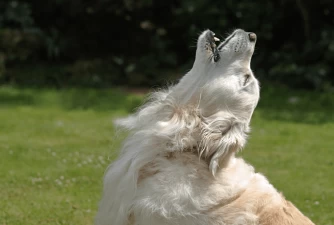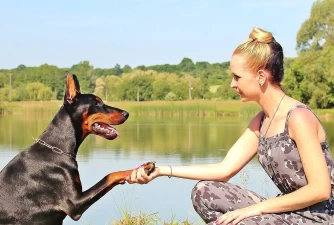How to Teach a Dog to Sit [3 Easy Steps]
20.04.2021.
Dog training is vital for all dogs, and teaching your dog the “SIT” command is one of the easiest things to teach. Sitting comes naturally to most dog breeds (some breeds, like the Greyhound, don’t like sitting because of their body structure). Learning this command is a great starting point for further training. Teaching your dog to sit can be considered groundwork for other commands like “Down” or “Stay.”
There are different ways to teach your dog to sit, and here at World Dog Finder, we have tried all of them. We can honestly tell you that our favorite way to teach a dog to sit is by using a clicker and dog treats. If you want to teach your dog the “sit” command, we can share with you the way we taught our dogs this command. Before we get into details, here are some things you should know about training and teaching a dog to sit.
Why is training so important?
Dogs don’t understand what behavior is expected or tolerated in your home. Training will let the dog know which rules they need to follow. With positive reinforcement training, you will endorse the dog’s good behavior instead of punishing the bad behavior.
Trained dogs are usually a lot better behaved than those that had no training. You don’t need a professional trainer to help you; you can easily teach your dog basic commands at home by yourself. Not only is it cool to have a dog that can perform and obey basic commands, but it will also strengthen your bond, and training can keep your dog out of trouble.
When you train your dog, they start seeing you as an authoritative figure, and they will know you are the one that sets the rules. Untrained dogs can become problematic and develop different behavioral problems that will require a professional trainer or dog behaviorist’s help.
If you want to know more about this topic, check out this article - Why is obedience training important?
3-step guide to teaching a dog to sit
As we said, “sit” is a basic command all dogs should know, and it will lay an excellent foundation for further dog training. If you want to teach your dog to sit, here is how to do it in these 3 easy steps.

Before you start any clicker training process, you need to create an association between the clicker and dog treats. Start by clicking and rewarding your dog immediately after the click. This can happen any time, and your only job is to create the association in your dog’s brain that the clicking sound means they get a treat. When you notice your dog reacts to the clicker, that means they are ready for clicker training.
You can read more about this type of dog training here - Getting started with clicker training.
Step one - Lure the sit position
The first step is relatively easy. Make sure you pick a place for training. That place should be somewhere without many distractions for your dog. It can be your yard or your living room. Make sure your clicker and dog treats are in your hands.
Hold a dog treat in your hand and move it close to your dog’s nose. Make sure they can smell you have a treat in your hand. That should interest them. Hold the hand close to their nose, and start moving it above the dog’s head, towards their ears and back. That should make your dog sit. Repeat until the desired position happens.
The critical thing to remember is to use your clicker when your dog’s rear touches the ground. That is the most considerable advantage clicker training has to offer. It is clear and precise. You are letting your dog know the exact moment they do something you want them to do. After your dog sits and you clicked your clicker, give them the treat and use loads of praises. Repeat this luring process until your dog is doing it constantly.
Step 2 - Including the command
The second step is focused on including the command. This process looks exactly the same as step one, but now you will start saying the command “sit” before moving your hand behind the dog’s head. You should still use a clicker and reward your dog every time they do what you want them to do.
Step 3 - Only command practice
By now, your dog should be reacting to the command more than the hand movement of your hand. They will be excited about getting a treat, and they will be eager to do what you expect them to do in order to get rewarded. If that is happening, you should start removing the “luring” part of training and only tell your dog the command.
This might take a while, especially if you have a slower-learning or stubborn breed. If your dog doesn’t react to the command, return to step 2 and repeat the process until the dog completely understands what it is you want from them.
If you will be training your dog, you should get great dog treats. Here are some interesting suggestions - Best dog treats.
Professional tips
We have professional dog trainers on our team. They are more than happy to share training techniques and helpful training advice. Here is what they wanted to include in this practical guide to teaching your dog to sit;
- Puppy training - Puppies are usually very excitable, so it is best to choose an environment with no distractions. There, the puppy can be focused entirely on you - their owner.
- Puppy attention span - Puppies have a short attention span and a lot of energy when they are awake. If your puppy is too energetic and lively, you should train them after a playing session or a walk, when their energy is a bit lower.
- High value treats - Puppies or dogs might be more enthusiastic about training if you use something they perceive to be of high value. Their favorite toy, human food, or tasty puppy treats will do the trick.
- Positive atmosphere - It is essential to keep the atmosphere positive. Your puppy might have a negative reaction to a negative atmosphere, and they won’t be as open about learning.
- Negative training methods - You should never use negative training methods. Punishing and using fear as a training method is never a good idea. It can result in a shy or overly aggressive dog.
In conclusion
Now you know how to teach a puppy or a dog to sit. This should be a fun experience, and you can see how well your dog or puppy responds to training. It is important to revisit basic training every once in a while and make sure your puppy remembers all the things they learned.
World Dog Finder team

![How to Teach a Dog to Sit [3 Easy Steps]](https://worlddogfinder.com/imager/1200x675/upload/articles/girl_teaching_dog_to_sit.png)





Share